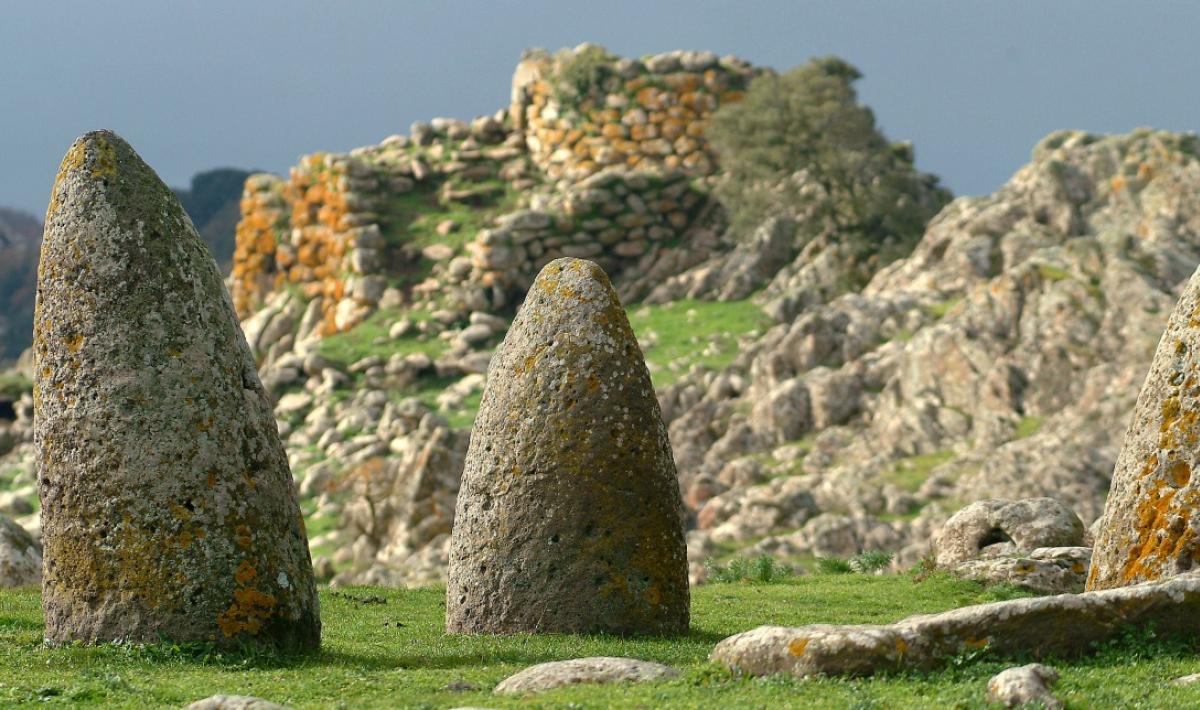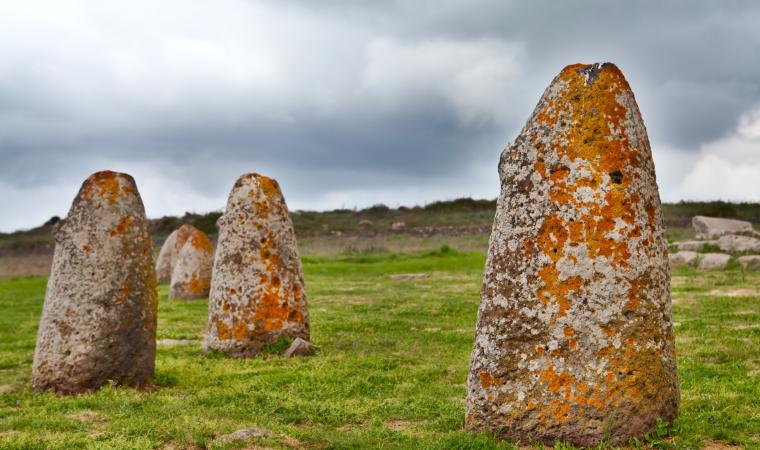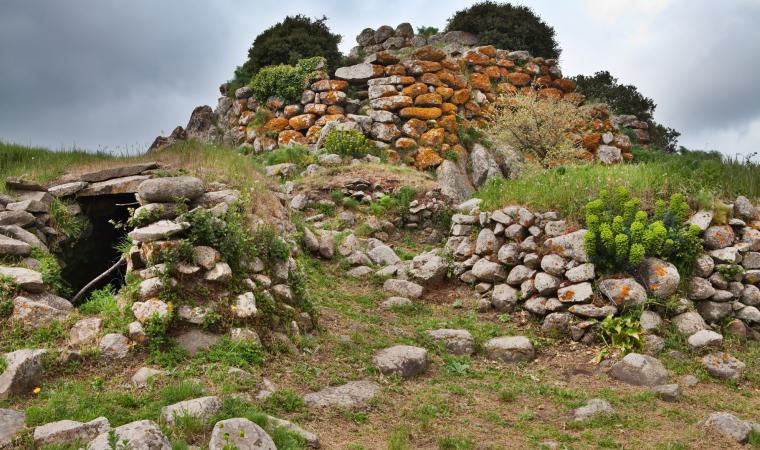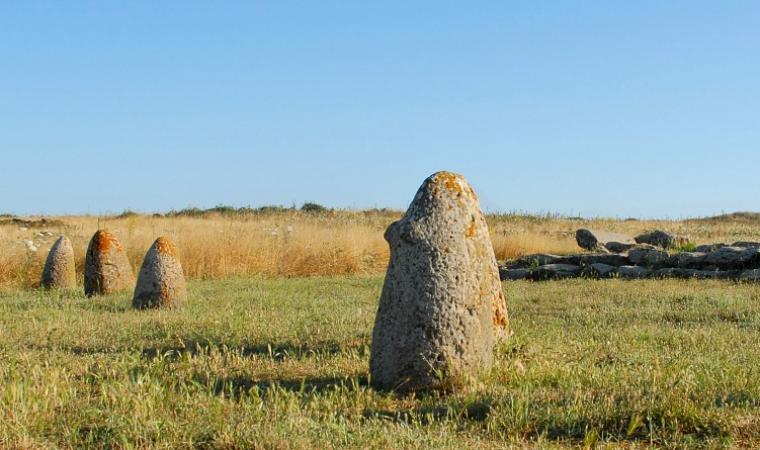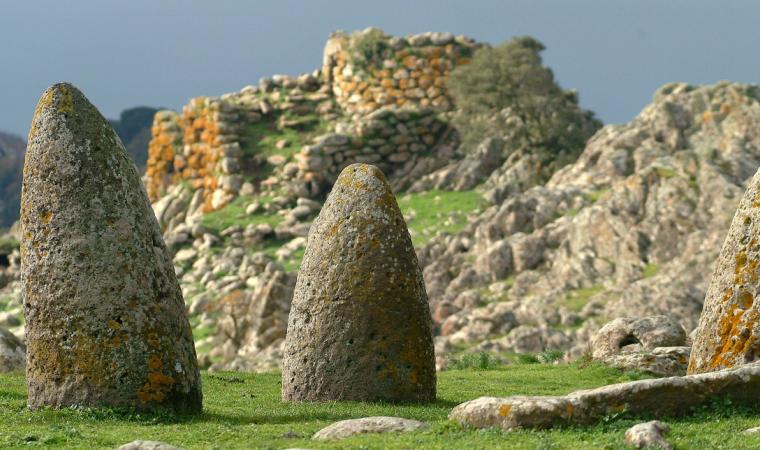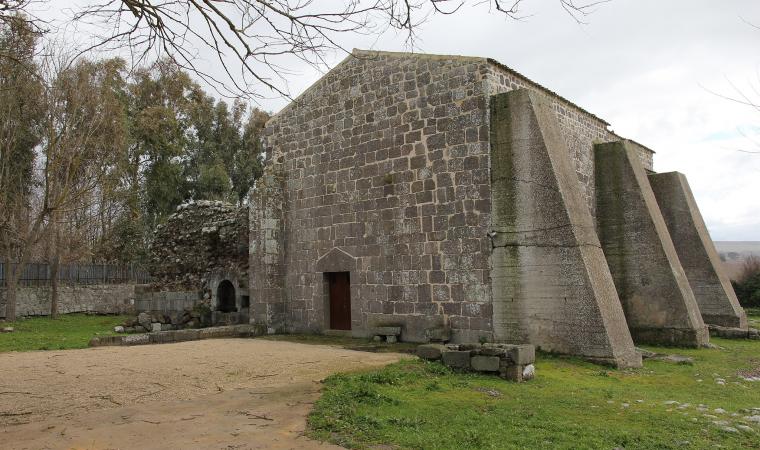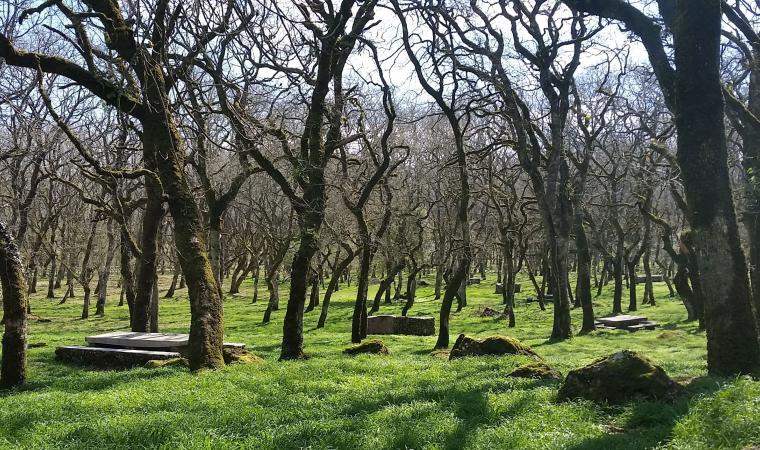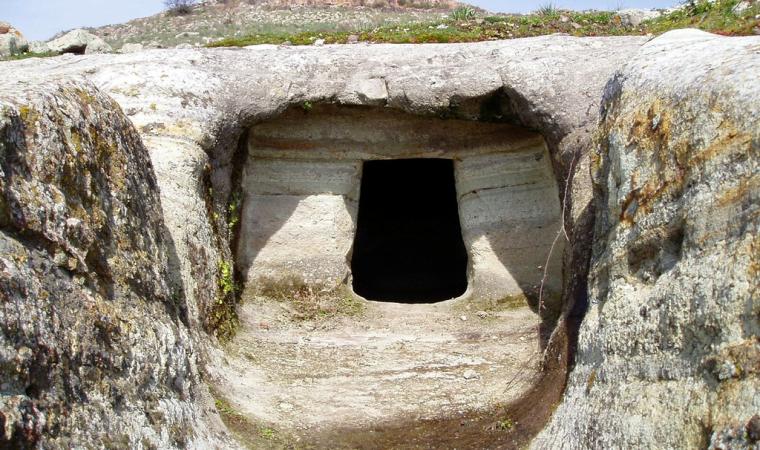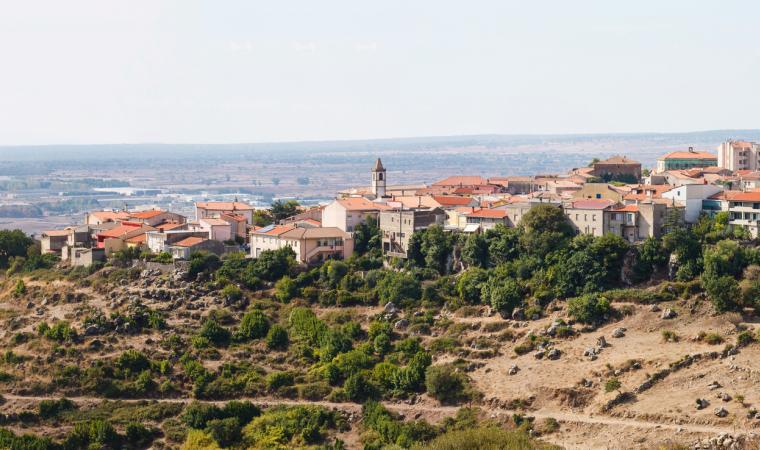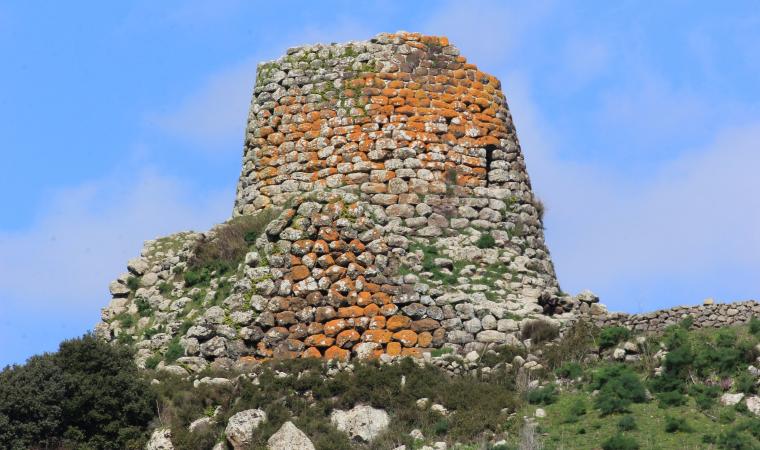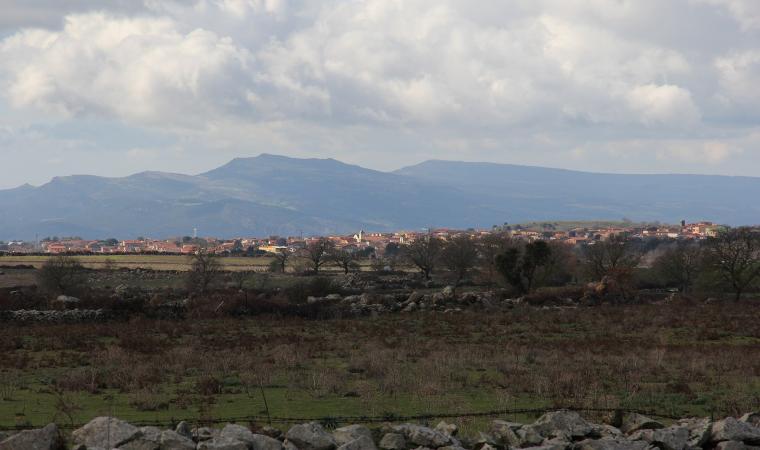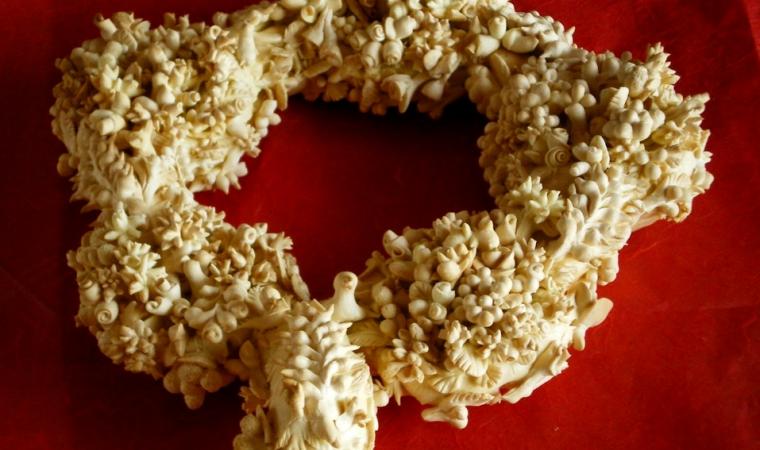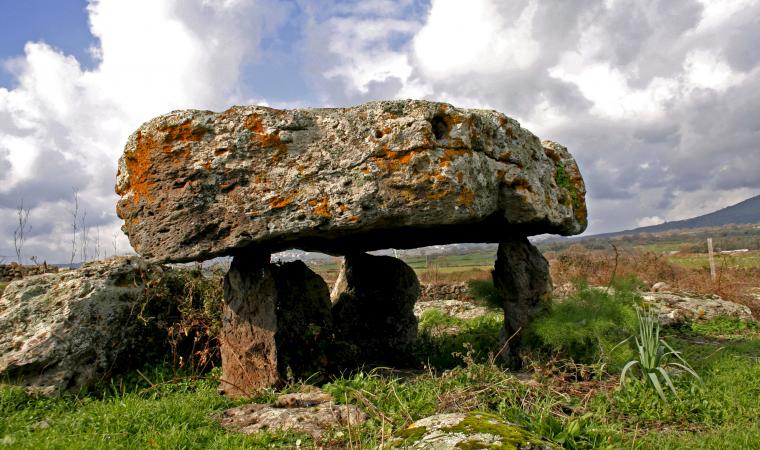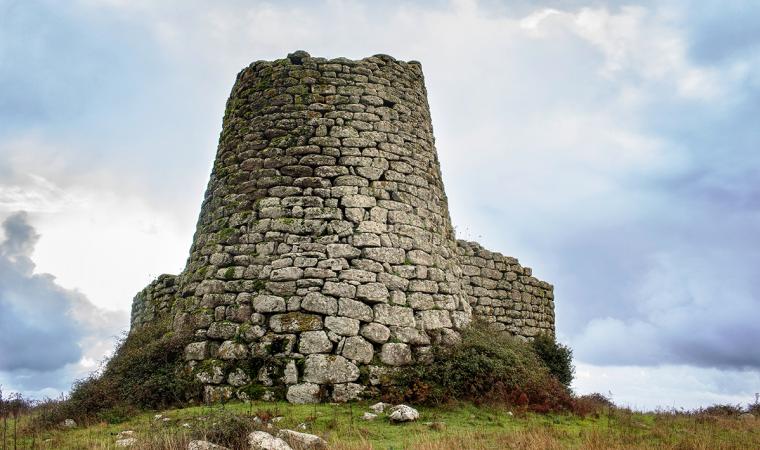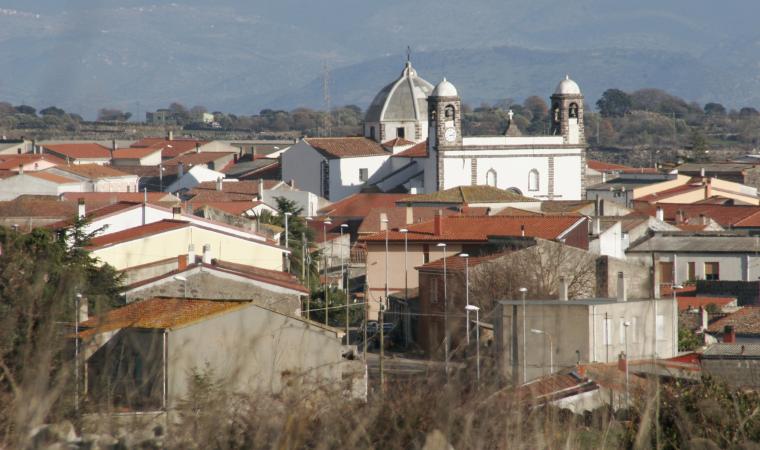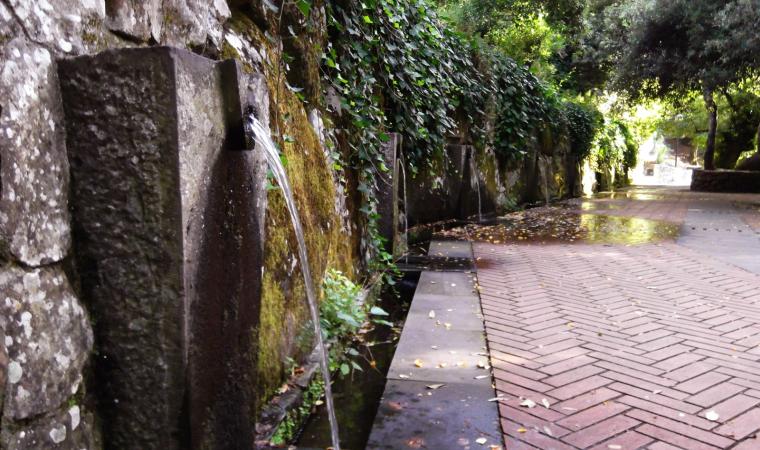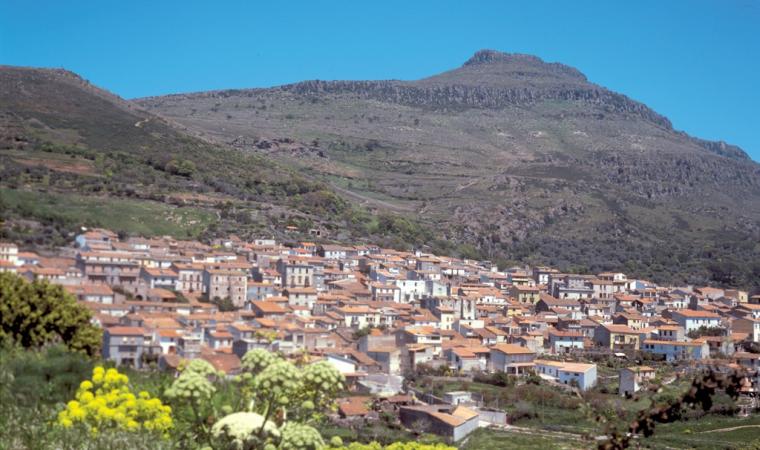For more than three thousand years, six stone guardians have been stationed in front of its funeral area, contributing to increasing the mystical atmosphere of the site. The Nuragic settlement of Tamuli extends along a plateau about four kilometres from Macomer, the main town in the Marghine region. The complex dates back to the Middle and Late Bronze Age, between the 16th and 13th century BC. You will immediately notice the three Tombs of Giants positioned side by side. Tomb 1 is the best preserved: it has a large semicircular area, crossed by a seat, with the entrance in the middle, obtained via a hole created on a trapezoidal slab. The body of the tomb is apsidal, with a rectangular floor plan. On the south side of the tomb you will see the most distinctive element of the site, locally known as sas perdas marmuradas: these are six anthropomorphic betyls, conical in shape and arranged in two groups. Three of them have two breast-like shapes, portraying female figures. The other three are smooth and smaller and appear to symbolise the male component. Tomb 2, albeit still partially underground, allows you to see the profile of the semi-circular area and the funeral chamber. In the corridor, you will notice the slightly raised entrance threshold with respect to the floor level and a well-worked slab on the south wall. The third tomb has only retained the final part of the funeral chamber, with walls made using the row technique. Some people have speculated that this could be a Dolmen burial, also due to the presence of two blocks of trachyte on the sides of the stone slab at tomb entrance.
The nuraghe stands on top of a rocky spike not far away. You will see a building with a complex structure, with a keep and a bilobed bastion leaning on the front. The entrance is architraved and leads to a corridor, the roof of which has been lost. You will also notice the traces of two towers, which were part of the bastion. The village extended around the Nuraghe, in which a dozen huts with a circular and oval floor plan can be identified. There is also news of the presence of a sacred spring nearby.
The territory of Macomer is dotted with prehistoric and protohistoric evidence: the best known is the nuraghe Santa Barbara. A bastion with four towers runs around the 15-metre-high keep, around which there are the traces of a village frequented up until the Early Middle Ages. To the north of the village, you will find the necropolis of Filigosa, famous for having given the name to a cultural facies of prehistoric Sardinia. It is made up of four domus de Janas, all of which contain multiple cells. The necropolis is ‘watched over’ from above by the nuraghe Ruiu with its 13-metre-high tower.

